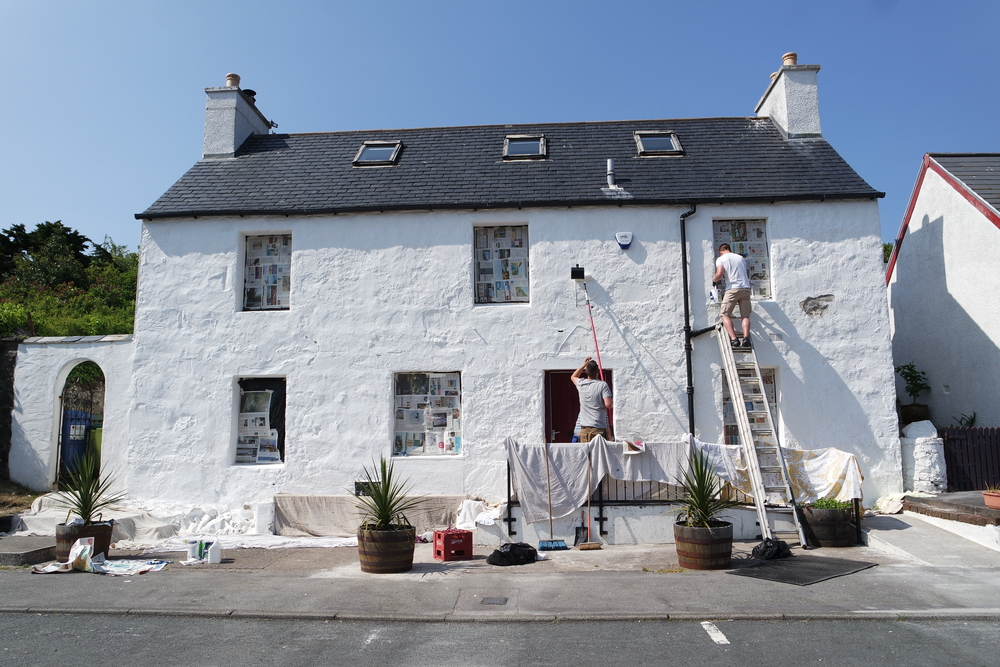4 Exterior Painting Techniques

Exterior house painting is a big job that carries many things but the reward after its completion is great as well. The painting job will give a new look to the siding and trim along with the increasing value of a house. When the painting is done your property will get a new look again.
If you are planning to do it yourself, then it is better to buy tools and paint. The money spent in this way is less as compared to hiring professionals for the job. In this blog, we will be looking at the techniques that you should know for exterior painting along with some bonus tips, materials, and equipment required.
Bonus Tips
- Keep the paint can close to the painting surface as this will minimize the dripping and arm moment.
- Learn to paint using one hand especially when working on ladder as it will double your reach to the surface.
- It is better to paint your doors and windows first so, that you can close them in the night.
- After completing the painting, write the date, location, formula, and name of each paint on the lid and then store them where it will not freeze.
Tools Required
The tools you need during the painting process include paint tray, paint roller, paintbrush, extension ladder, rags, painter’s tape, and roller sleeve. You should have ladder stabilizer and roller screen as well.
Materials Required
The material you need includes paint and 1 extra 5-gallon bucket.
Exterior Painting Techniques
Now, we will be discussing the exterior painting techniques to help you out. Moreover, if you are not able to do the painting on your own, then you need to hire exterior painters Cape Cod to get a new look of your property.
1 – Roller Technique
This technique is also having 3 steps as listed below:
1-You need to pour your paint in a 5-gallon bucket and also having a rollers screen inside the bucket. You need to roll the roller against the screen so, that the excessed paint is squeezed out and the roller nap is saturated enough.
2- Apply the paint using the roller. Apply the paint with moderate pressure and you need to reload the roller when the paint do not flow easily. You need to cover the 3 or 4 sq. ft area. Remember one thing the rolling will cause spatter so, you need to ensure that your walks, landscaping, and patios are protected using plastic cloth and drop cloths.
3- You need to back-brush paint on the cracks and on the bottom edge of siding and shingles using your paintbrush. To smooth the paint, you need to use the grain of the wood.
2 – 3 Step Brush Technique
In this you need to do the following three steps:
1- You need to dip the brush 2 inch in the paint and then move brush back and forth against the side of the paint can for removing the extra paint. It is recommended to paint from a bucket that is having 2 or 3-inch paint at the bottom instead of painting from a full can.
2- Next, you need to lay the paint with two or three strokes in back and forth direction. Don’t focus on smoothing it at this point. Again, reload the brush with paint until you have covered the 3 or 4 sq.ft of the surface.
3- Now, you need to smooth the paint. For this, you need long, sweeping brush strokes and move it from non-painted area to the painted area. You need to lift the brush when moving it at the end of each stroke.
3 – Door Painting Techniques
For painting your door, you need to do the following:
You need to paint the door panel first, and then to the corners. You need to apply long strokes in direction of the wood grain to smooth the paint.
Spread a layer of paint on the parts of the door. You need to do it from one end to other over the wet paint. You should spread the paint on the one-third of the door with a long sweeping brush. Remember one thing you need to paint the top and below an edge of the door to seal moisture. Moreover, if you don’t think this work easy for you, then you can hire a professional painting company to get the job done.
4 – Cutting in Exterior Painting Technique
In this technique you need to do the following:
1-Load the brush and jiggle the tip of brush inside the corner and pull it out one edge for 4 inches.
2-Paint the next edge using the previous step. Reload your paint brush and remove the excess paint from the brush bristles by laying the paint close to edge you are cutting in but not against it.
3-To end the exterior painting you need to smooth the paint in the center of a panel using a long sweeping stroke keeping it away from the completed edge.
These were some of the techniques that you need to know when painting the exterior of your house. Furthermore, if you are looking to get professional help, then you should contact painters on cape cod for the satisfactory results.